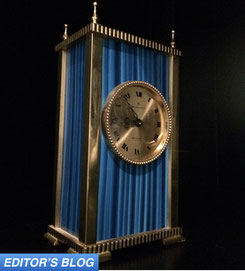
Shall we play a game?
Love to. How about Global Thermonuclear War?
Twenty years before the release of the movie classic WarGames, the United States military decided to play a game of Local Thermonuclear War. At war, the fictional super powers of Calonia and Nezona. At stake, a descent into MADness - mutual assured destruction.
With the Cuban Missile Crisis barely over and the threat of nuclear war palpable, the US military crafted a training exercise called Desert Strike. A collaboration between the Army and the Air Force, the exercise was designed to train U.S. Strike Command forces in executing joint operations during a nuclear war. But unlike the movie, Desert Strike was no computer simulation, rather it was a massive, invasion-like operation that took place over two weeks in May of 1964. After securing over 12 million contigous acres of desert land in California, Arizona, and Nevada in which to train, a staggering 89,788 army troops, nearly 10,000air force personnel, 780 aircraft, 1000 tanks, and 7000 other land based vehicles descended on the Mojave Desert.
As the troops moved in, the "war" scenario was explained - Calonia and Nezona shared a border that ran from Mexico in the south along the Colorado River to Las Vegas in the north. Calonia was on the west side of the border, Nezona on the east, and the two were in conflict over water rights along the river. To make the exercise as realistic as possible, each side had a Joint Task Force in charge of executing military maneuvers, and each had a War Cabinet in charge of political decision making and of testing methods to deescalate nuclear attacks.
With all units in place, the first week of the game commenced with Nezona crossing the Colorado River under cover of darkness on Mary 17 and 18. Knowing that a small nuclear device could take out multiple bridges at one time, Nezona built eight major crossings over a 140 mile stretch of the Colorado. Once troops crept into Calonia, a massive ground and air assault began. Despite being an exercise, the "fighting" was hard, loud, and dangerous. TIME magazine journalists described the conflict in a June 5, 1964 article entitled "Armed Forces: Non-War is Hell,"
Hordes of 52-ton tanks churned up cooling waves of orange dust over California's Mojave Desert. Oil-drum devices released mushroom clouds to simulate atomic attack. In the 105 [degree] heat, smoke generators threw up acrid screens. Fighter-bombers singed the sand with the blast of their afterburners. The normally green Colorado river turned brown with machine-swirled mud, black with slicks of oil.
Blasts on the ground combined with massive amounts of gear falling from the sky. In one sortie, 250 tons of equipment separated into 40 planes was airdropped into the war zone. The equipment was followed by 1,600 paratroopers diving into the fray.
Commanders reset the playing field for the second week of Desert Strike. Nezona soldiers were moved back to their own side of the river and Calonia was given a two brigade advantage and a 10 to 6 tactical air squadron advantage. Suddenly out numbered and on the defensive, Nezona desperately tried to secure the river by launching 19 simultaneous simulated nuclear attacks. Calonia retaliated with five nuclear strikes and then dropped paratroopers on Nezona's position, eventually surrounding their enemy. By the end of the week only a few Nezona troops remained, and by the last day of the two week session, the exercise had played itself out. However, the "war" was not without casualties. Thirty three people died either in the exercise itself or during preparations for it. Two people were run over by a tank as they slept; others drown in the Colorado River. One person died when a personnel carrier ran off the road; other died in aviation accidents and various terrestrial vehicle accidents.
In addition to lives lost, the operation also cost roughly $60 million, begging the question, was it worth it? To find out, the army created a "liaison group" with Major General Joseph E. Bastion, Jr., Commanding General, Armor Training Center, Fort Knox at its head. The group was in charge of assessing Desert Strike as a whole, gleaning lessons learned, and making final recommendations to the armed forces on how to improve joint operations between the army and air force.
General Bastion and his group pointed out positives, stating that the remoteness of the training area, the lack of infrastructure, and the lack of population centers allowed for realistic combat training. The exercise also proved that large cumbersome and complicated command posts, the favored model going into the operation, were not nearly as effective as small mobile command posts.
However, despite some positives, the overall value of such massive maneuvers was debated within the armed forces. One side concluded that training for realistic combat could only be achieved through exercises like Desert Strike. The other side decided that the costs were too high in terms of actual dollars spent and in the effort it took to move tens of thousands of troops and all of the supporting equipment to the training grounds. They also argued that while the exercise was very good for high level commanders, the individual soldier did not adequately benefit from the experience.
If the armed forces ever circled back to an assessment of how nuclear deescalation efforts worked during Desert Strike, the assessment was not immediately accessible. Perhaps one is simply left with the lesson of WarGames: Global Thermonuclear War, "A strange game. The only winning move is not to play."

Jennifer Riddle started her professional career as a happy field hand in the Nevada desert. She worked her way up to Principal Investigator and romped through the American Southwest and Great Basin for 15 years, stopping the romping only when she decided to join the Almanac ranks and start writing articles for a living.



